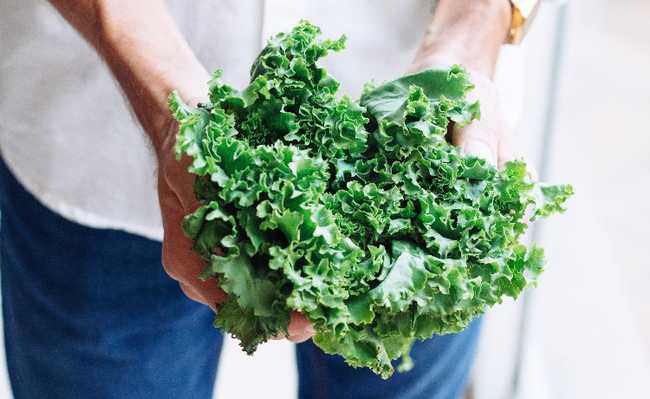Brown rice: fattening or losing weight?
Brown rice contains nutrients that white rice lacks, such as vitamins, minerals and antioxidants

Image: Pixzolo Photography on Unsplash
Brown rice is often associated with healthy eating. This type of rice retains the nutrients that white rice lacks, such as vitamins, minerals and antioxidants. That's because the whole version keeps the bran and germ, removed in the white rice cleaning process. However, due to the popularity of diets low carb, some people are avoiding brown rice. But is this the best decision? Understand!
- What are fresh, processed and ultra-processed foods
- Antioxidants: what are they and in what foods to find them
Nutrient rich
Although brown rice is a simple food, its nutritional profile is quite rich. Compared to white rice, brown rice has a lot more to offer in terms of nutrients.
While similar in calories and carbohydrate content, brown rice outperforms white rice in almost every other category. A cup of brown rice contains:
- Calories: 216
- Carbohydrates: 44 grams
- Fiber: 3.5 grams
- Fat: 1.8 grams
- Protein: 5 grams
- Thiamine (B1): 12% of the RDI (Recommended Daily Intake)
- Niacin (B3): 15% of the IDR
- Pyridoxine (B6): 14% of the IDR
- Pantothenic acid (B5): 6% of the IDR
- Iron: 5% of the IDR
- Magnesium: 21% of the IDI
- Phosphorus: 16% of the IDR
- Zinc: 8% of the IDR
- Copper: 10% of the IDR
- Manganese: 88% of the RDI
- Selenium: 27% of the IDR
- What are iron rich foods?
- Magnesium: what is it for?
Brown rice is a good source of folate, riboflavin (B2), potassium and calcium. In addition, it is exceptionally rich in manganese, a little-known mineral, but vital for important processes in the body, such as bone development, wound healing, muscle contraction metabolism, nerve function and blood sugar regulation (see study about it here. 1).
Manganese deficiency has been associated with an increased risk of developing metabolic syndrome, bone demineralization, impaired growth and low fertility (2, 3). Just one cup of brown rice meets almost all of your daily manganese needs.
And brown rice also provides powerful plant compounds, such as phenols and flavonoids, antioxidants that help protect the body from oxidative stress (see study on this: 4), a phenomenon associated with the development of heart disease, certain types of cancer and the premature aging (see study about it here: 5).
These antioxidants found in brown rice help prevent cell damage caused by unstable molecules called free radicals and reduce inflammation in the body (see study on this: 6).
Studies suggest that the antioxidants found in rice may be responsible for the low prevalence of certain chronic diseases in areas of the world where rice is a staple food.- What are free radicals?
- How to prevent cancer with seven tips
- 16 foods that are natural anti-inflammatory
Is brown rice good for weight loss?
Replacing more refined grains with brown rice can help you lose weight. That's because refined foods like white rice, white noodles and white bread lack the fiber and nutrients that whole grains like brown rice contain.- Fiber-rich foods fight diabetes and high cholesterol
- What is dietary fiber and its benefits?
One cup (158 grams) of brown rice contains 3.5 grams of fiber, while the same amount of white rice provides less than 1 gram. Fiber provides satiety for a long period of time, so choosing to consume foods rich in fiber can help lower your overall calorie intake (see study about it here: 7).
People who eat more whole grains, such as brown rice, weigh less than those who eat less whole grains. A study of more than 74,000 women found that those who ate more whole grains weighed considerably less than those who ate fewer whole grains.
Replacing white rice with brown rice can also help reduce belly fat. In one study, 40 overweight women who ate 2/3 cup (150 grams) of brown rice a day for six weeks had significant reductions in body weight and waist circumference compared with women who ate the same amount of rice. White rice. In addition, women who ate brown rice experienced a significant decrease in blood pressure from inflammation in the body.
Can benefit heart health
A study of more than 560,000 people showed that those who ate the most dietary fiber had a 24% to 59% lower risk of developing heart disease, cancer and respiratory problems.
A review of 45 studies found that people who ate the most whole grains, including brown rice, had a 21% lower risk of developing coronary heart disease compared to those who ate the least whole grains.
In addition to being a good source of fiber, brown rice contains compounds called lignans, which can help reduce risk factors for heart disease. Diets that include foods rich in lignan, such as whole grains, flaxseeds, sesame seeds, and nuts, have been associated with lower cholesterol, blood pressure, and reduced arterial stiffness (see study on this: 8).
In addition, brown rice is rich in magnesium, a mineral that plays an important role in maintaining heart health. A review of 40 studies found that increasing dietary magnesium was associated with a 7% to 22% lower risk of stroke, heart failure, and all-cause mortality.
- Flaxseed oil: understand its benefits and the importance of your omega 3
Another review of nine studies demonstrated that for every 100 mg/day increase in dietary magnesium there is a 24% to 25% decrease in mortality from heart disease in women.
It's a better choice for people with diabetes
Reducing your carbohydrate intake and choosing healthier options is vital to controlling your blood sugar. Although carbohydrates have the biggest impact on blood sugar, people with diabetes can reduce blood sugar levels by eating less refined grains such as white rice.- Diabetes: what it is, types and symptoms
- Natural Remedies Help Diabetes Treatment
Replacing white rice with brown rice can benefit people with diabetes in several ways. In one study, people with type 2 diabetes who ate two servings of brown rice a day had a significant decrease in post-meal blood sugar and hemoglobin A1c (a marker of blood sugar control) compared with those who ate White rice.
Brown rice has a lower glycemic index than white rice, which means it is more slowly digested and has less impact on blood sugar. Choosing foods with a lower glycemic index can help people with diabetes better control their blood sugar.
- What is the Glycemic Index?
Several studies suggest that foods with a higher glycemic index increase blood sugar, insulin and ghrelin, a hormone that increases hunger (see studies here: 9, 10)
Reducing ghrelin levels can help people with diabetes control their appetite for food, which can help control blood sugar. In addition, substituting brown rice for white rice can reduce the chances of developing type 2 diabetes in those who do not develop the disease.
In a study that included more than 197,000 people, switching just 50 grams of white rice to brown rice per week was associated with a 16% lower risk of developing type 2 diabetes.
Brown rice is naturally gluten-free
Gluten is a protein found in grains like wheat, barley and rye. Nowadays, more and more people follow gluten free diets for various reasons. Some people are allergic or intolerant to gluten and experience mild and severe reactions such as upset stomach, diarrhea, bloating and vomiting.
- Diarrhea Remedy: Six Home-Style Tips
In addition, people with certain autoimmune diseases often benefit from a gluten-free diet (see studies on this here: 11, 12). These factors have led to an increasing demand for gluten-free foods.
- What is gluten? Bad guy or good guy?
- Celiac Disease: Symptoms, What Is It, Diagnosis and Treatment
Fortunately, brown rice is naturally free of this often problematic protein, making it a safe option for those who cannot or choose not to consume gluten. Unlike highly processed gluten-free items, brown rice is a whole grain full of beneficial nutrients that the body needs to function properly.
Brown rice is also made into other healthy, gluten-free products like crackers and noodles that people on gluten-free diets can enjoy.
Adapted from Jilliam Kubala, Nutrition Data, Science Direct and PubMed










